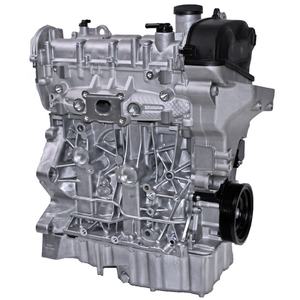Update Your Lorry with a New Opel Corsa Engine
Update Your Lorry with a New Opel Corsa Engine
Blog Article
Checking Out the Inner Functions of a Compact Vehicle's Engine System
As chauffeurs, we often take for approved the intricate procedures that occur within the confines of our lorry's engine system. In this exploration of a portable lorry's engine system, we will decipher the internal workings of this mechanical symphony, shedding light on the secrets that drive us onward on our day-to-day trips.
Combustion Process Introduction
The combustion process in a compact lorry's engine system is an essential system that successfully converts fuel right into power to power the car. This procedure occurs within the combustion chamber of the engine, where gas and air mix, stir up, and produce regulated surges. The combustion procedure includes four main phases: consumption, power, exhaust, and compression.
During the intake phase, the piston moves downward, pulling in a combination of air and gas into the combustion chamber. The next phase, compression, includes the piston relocating up, compressing the air-fuel combination to boost its strength. Subsequently, in the power phase, the ignition system ignites the pressed mixture, causing a fast expansion of gases that requires the piston pull back. This down activity generates the power required to drive the vehicle. Ultimately, in the exhaust stage, the burnt gases are expelled from the burning chamber via the exhaust valve, preparing the chamber for the following cycle. This cyclic burning procedure is fundamental to the operation of a small lorry's engine system, making sure reliable power conversion for propulsion.
Piston and Cylinder Interaction

The piston's accurate fit within the cyndrical tube is important for keeping optimal compression and stopping energy loss during burning. Limited clearances between the piston and cyndrical tube wall surfaces ensure effective securing, allowing the piston to move smoothly without allowing gases to leak past. Correct lubrication is also important to minimize rubbing and wear between these elements, boosting long life and performance.
Additionally, the style and materials utilized in producing the piston and cyndrical tube influence engine efficiency and longevity. Modern engines usually use light-weight yet sturdy materials like aluminum alloys for pistons and cylinder liners to decrease inertia and improve thermal performance. Generally, the harmonious interaction between the piston and cyndrical tube is essential to the engine's functionality and overall performance.
Gas Injection System Capability
Fuel injection systems in small vehicle engines play a vital role in specifically providing fuel to the burning chamber for effective and regulated ignition. The fuel injection system functions by injecting gas right into the burning chamber at the optimal minute during the engine's operation (opel corsa engine). This exact timing guarantees that the gas mixes evenly with the air for proper burning, leading to enhanced fuel efficiency and reduced exhausts
There are largely 2 kinds of fuel injection systems made use of in small car engines: port fuel shot (PFI) and straight fuel injection (DFI) PFI systems infuse fuel right into the intake port before the consumption shutoff, Related Site while DFI systems inject gas straight into the combustion chamber. Both systems have their benefits, with DFI using far better fuel atomization and PFI supplying an extra affordable option.
Comprehending Engine Air Conditioning Devices
Efficient procedure of a small vehicle's engine relies heavily on the efficiency of its cooling devices. The air conditioning system in a compact car commonly consists of a number of parts working together to regulate the engine temperature level. Recognizing these engine air conditioning devices is vital for maintaining the performance and long life of a small car's engine system.

Exhaust System Elements Explained
The optimal functioning of a small automobile's engine cooling mechanisms depends on a corresponding system understood as the exhaust system, which comprises numerous vital components for guaranteeing effective discharges and engine efficiency. The exhaust manifold collects exhaust gases from the engine's cyndrical tubes and routes them to the catalytic converter.
One vital part of the exhaust system is the oxygen sensing unit, which checks the oxygen degrees in the exhaust gases to aid control gas consumption and make sure optimal engine performance. opel corsa engine. Additionally, the resonator might exist in some exhaust systems to lower sound degrees. Generally, the exhaust system browse this site plays an essential role in preserving engine performance, lowering damaging exhausts, and guaranteeing a quieter driving experience for portable vehicle owners

Verdict
To conclude, the small lorry's engine system is an intricate mix of parts that function with each other to assist in the burning process, convert gas into energy, and eliminate waste gases. Understanding the inner workings of the engine system, including the piston and cyndrical tube communication, fuel injection system, engine cooling devices, and exhaust system parts, is important for keeping optimal performance and efficiency of the lorry.
The combustion process in a small lorry's engine system is an essential device that effectively converts fuel right into power to power the automobile.Fuel injection systems in portable automobile engines play a vital duty in precisely providing gas to the combustion chamber for controlled and efficient ignition.There are largely 2 kinds of gas shot systems used in compact car engines: port gas shot (PFI) and direct fuel shot (DFI) Comprehending these engine cooling systems is important for maintaining the efficiency and durability of a portable lorry's engine system.
The optimal functioning of a compact automobile's engine air conditioning systems depends on a corresponding system known as the exhaust system, navigate here which consists of various vital components for making certain effective exhausts and engine efficiency.
Report this page